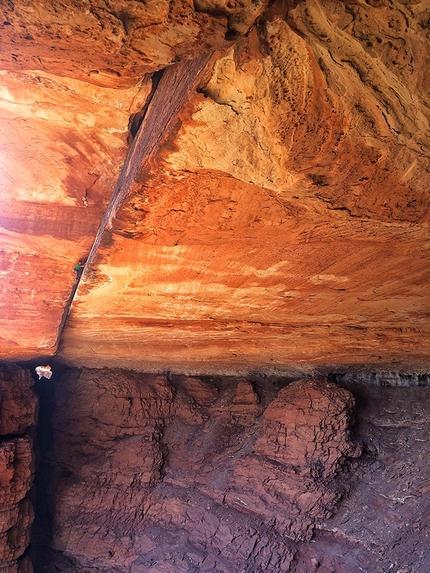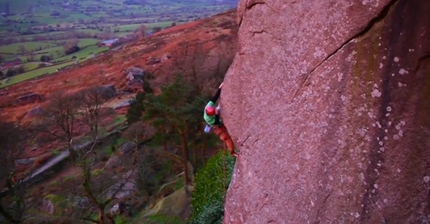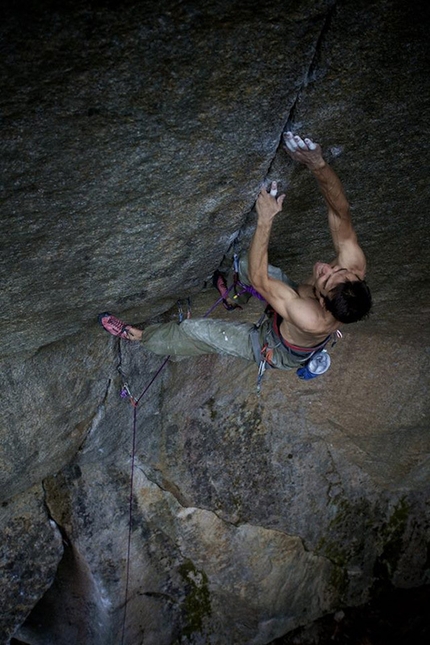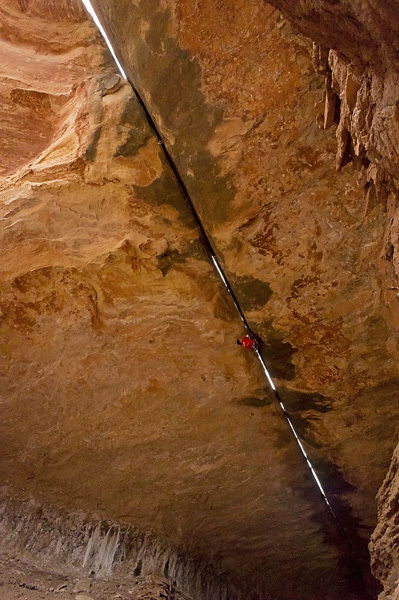Pete Whittaker / Climbing interview after all-free rope-solo up El Capitan in a day
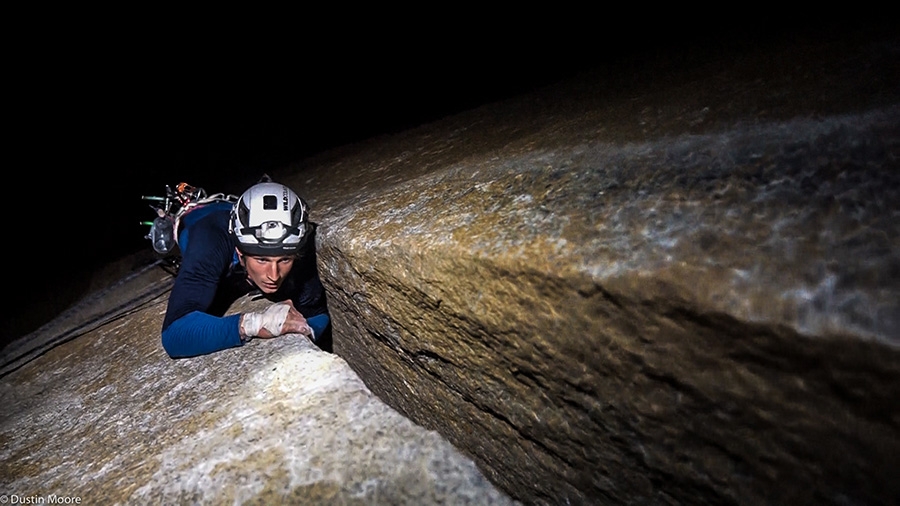
 1 / 2
1 / 2 Dustin Moore
Dustin Moore
In a single day at the start of November Pete Whittaker made a remarkable solitary free ascent of Freerider, the 4-pitch 5.12d variation to the Salathe Wall established by Alexander Huber and Tomas Huber in October 1998, hailed as the easiest free climb up El Capitan. The British climber set out at 3:02pm on Wednesday 9 November and summited at 11:08am on Thursday 10 November, having climbed all 37 pitches free and having taken just one fall.
In May 2007 Canada’s Stéphane Perron climbed Freerider free over seven days, while in 2013 Jorg Verhoeven repeated the route in four days. It is worth remembering that a few years earlier Dean Potter free soloed - ie climbed without a rope - the final quarter of Freerider on El Capitan. By now shaving the time down to 20 hours and 6 minutes, Whittaker has become the first to climb El Capitan on his own and free in a single day.
Pete, can you explain in layman’s terms what rope soloing is and what it entails?
Rope soloing is climbing a route by yourself. You belay, you lead, you place the gear, you second the route, you take the gear out, you manage the ropes, you do everything. Everything your partner does for you on a route, you now have to do.
How much do you have to climb?
To fully rope solo a full pitch, you basically have to cover the ground three times: you have to lead a pitch, abseil the pitch (to unfix your ropes from the previous anchor), then second and clean the pitch via some method, either by re-climbing it or jumaring.
So how much longer does it take compared to climbing with a partner?
The speed you move rope soloing, compared to climbing with a partner, depends on the ability of your partner. I could probably rope solo quicker than climbing with a less competent partner. If you can lead pitches quicker then your partner would lead them, and abseil, strip and jumar the pitch quicker then your partner would second, you will move quicker. The difference is, you will be way more tired. If you climb with someone who is the same ability as yourself, rope soloing will be slower.
It sounds like a lot of hard work. What lured you to it?
Rope soloing was just the answer to the challenge I had in mind. I didn't think 'ooo I'd love to go rope soloing’. I thought 'ooo i'd love to climb El Cap by myself'. And rope soloing was the answer, and luckily I enjoyed it.
What was your previous rope soloing experience?
I did my first ever roped solo route in March. It was a single-pitch unrepeated E8 on the gritstone. I managed to do it, but it didn't go well. I did a few more easier routes up to E5 on the gritstone before I thought 'I've got the hang of this now'. I then headed to Squamish this summer to practice my systems on multi-pitch routes, before taking them to the Big Walls of Yosemite. Soloing 'all free' El Cap in a day, was the only thing I had planned.
If we’re not mistaken, you were already familiar with Freerider.
Yes, I’d climbed Freerider big wall style, back in 2014 with my friend Tom. Since then I climbed the Freeblast pitches 5 more times, the Heart to Alcove section 3 more times and the pitches above the Alcove another 2 times.
You started late in the day and did much of your climbing during the night. How come?
It seemed like 12 pm - 3 pm was the hottest part of the day in Yosemite, so this was the part of the day I wanted to try and avoid. My reckoning was that if I started at 3pm and was quick (under 21 hours) then I would miss this part. So I started at 3 in the afternoon. It went dark at about 5.30 and I continued climbing through the night. It started to get light when I got to the Endurance Corners. By the time the sun came onto that side of El Cap, I was in the top, left-facing corner system and out of any sun. I only had to climb the last two pitches in the blazing heat. It worked perfectly.
Were there others on the route?
It was amazing, I think it was the only time all season that there was no one on Freerider. I had it all to myself. I passed some people in the Alcove who were busy climbing Golden Gate.
Did you ever fall? What are the accepted ethics on rope soloing?
I slipped off the start of one pitch, so I went back to the belay and started again. With big walling, if you fall off a pitch, the accepted ethic is to re-start again at the belay.
How much gear did you take with you?
I tried to go as light as possible without being unsafe. 14 cams, 5 snap gates, 3 quickdraws, rope soloing equipment, light synthetic, knife, head torch, food, water. I think the only thing I risked was not taking a waterproof.
The belays have to be absolutely bombproof…
Yes, the belays have to be bombproof, because if you fall, you are shocking the belay (as that is where your rope is attached to). You have to be sure that the belay can take an upwards and downwards force. On El Cap this is easy as they are mostly bolted belays.
Last question Pete: did you plan to do it in a day?
Yes, in a day. I'd go back to do it again if the time had been 24:00:01
| www | |
| www.thebmc.co.uk | |
| Instagram Dustin Moore | |
| Instagram Pete Whittaker | |
| FB Pete Whittaker | |
| www.petewhittaker.co.uk | |



 Copia link
Copia link
